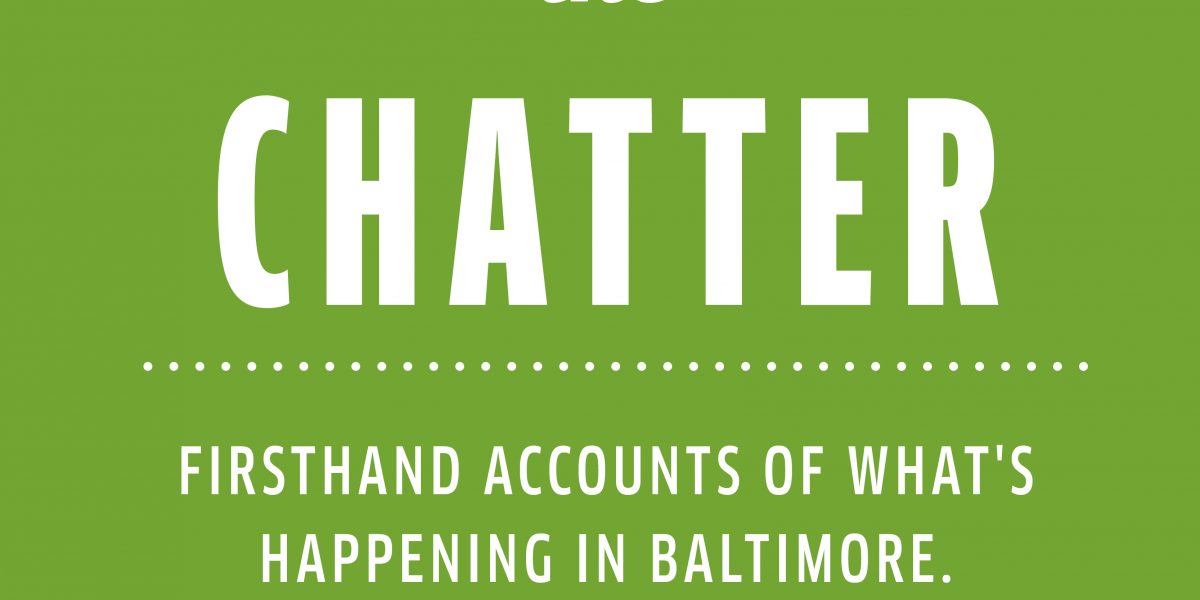News & Community
The Chatter: February 2014
Firsthand accounts of what's happening in Baltimore.
Velvet Elvis
December 15, 2013
E. Fort Avenue
The
slightly battered, retro, red-leather stools are filled, but turned
away from the bar as patrons peruse the rear “gallery” wall. At the end
of Idle Hour’s narrow corner bar, DJ Mike Yonko spins 45s, including
“Blue Christmas” and “Suspicious Minds,” in keeping with tonight’s
“Velvet Elvis Off”—a combination art competition and charity auction.
Bartender/curator
Jen Gallia explains that the 14 works (starting bids range from $2.99
to $250) will be sold to raise money for BARCS, the Baltimore animal
rescue shelter. Meanwhile, themes in the kitschy paintings swing wildly
across the pop-cultural spectrum.
“That’s Tebow-Elvis,” a customer
swilling a beer notes to his girlfriend, pointing to a painting of a
solemn Elvis in a pose made famous by the former NFL quarterback.
“That’s Jimi-Elvis,” he continues, gesturing to a psychedelic portrait
of the King, “and at the end is Hound Dog, Poker-Playing Elvis.”
Other
works include a glimmering, velvet-pompadoured Elvis next to a tray of
deep-fried peanut-butter-and-banana sandwiches and a surreal cutout
featuring Elvis’s face, Lou Rawls’s body, and Phil Ochs’s guitar with
Graceland in the background. Ultimately, Joe Glorioso, an ad agency art
director, wins Best Work—receiving a tiny cut of the canvases’ sales.
“Painting
on velvet is hard, like painting on a sock. Just absorbs everything,”
Glorioso says, referring to his silhouette of the icon, circa 1971, in
cape and faux rhinestones, spreading his arms beneath a spotlight
pouring down from above. Upon inspection, a crucifixion image of Jesus
is revealed on the King’s plastic, oversized belt buckle—reconfigured
from a dime-store bracelet. “Elvis is like a religious figure to
people,” says Glorioso, who grew up watching the singer’s movies with
his mom. “I just wanted to take it up a notch.”
Neo-Burlesque
December 20, 2013
Eastern Avenue
The
Creative Alliance is packed for the third show in a five-performance
burlesque run, and the tassels will be twirling soon enough, but first,
emcee Murray Hill—a tuxedoed “drag king” channeling a Catskills-era Don
Rickles—wants to get to know the crowd. “The woman in the ‘I Love Female
Orgasm’ T-shirt, are you with the guy on your left or the woman on your
right?” Hill asks of an audience member near the stage. “Both,” the
woman replies. “This is my husband and she’s my girlfriend. It’s a
polyamorous relationship.”
“You gotta love Baltimore,” Hill says,
smiling mischievously as the crowd breaks up. “A polyamorous . . . so
does he get to watch when you two . . . or join in?” The women, who’ve
had a few drinks, laugh nervously, and then stammer briefly before
responding.
“C’mon ladies,” Hill (real name: Betsey Gallagher) chides. “Get your story straight. He’s sitting right here.”
After
Hill’s opening shtick, the night’s first exotic dancer, Perle
Noire—shimmering red dress and feather boa—va-va-vooms down the runway,
leaving behind one long white glove at a time. She’s followed by a tap
dancing, bare-almost-all flapper named Gin Minsky.
Eventually the
show’s stars, 6-foot-6 inch “Mr. Gorgeous” and 5-foot, flame-haired
powerhouse Trixie Little, take the stage together, mixing acrobatics,
dance, and sex appeal like a pair of campy, X-rated figure skaters.
This
is the ninth year that Trixie, aka Keri Burneston, has brought the show
here, which Creative Alliance co-founder Megan Hamilton calls “a
bedrock of our holiday programming.” Asked how, exactly, burlesque
reflects the holiday season, Hamilton says many Baltimoreans have made a
tradition of bringing family members who return home this time of year.
“And,” she notes after a pause, “there are the twerking gingerbread
men.”
True Meaning
December 28, 2013
E. Lombard Street
“Habari
[How are you?],” Maulana Karenga booms in Swahili, greeting the
overflowing Kwanzaa crowd inside the Reginald F. Lewis Museum’s theater.
“Nzuri! [Good!]”
Born Ronald Everett, not far from the Eastern
Shore birthplaces of Frederick Douglass and Harriet Tubman, Karenga
founded the weeklong celebration of African culture 47 years ago. Active
in the Black Power movement and a scholar with two Ph.D.s, Karenga
explains Kwanzaa is a means for African-Americans to “reaffirm our
rootedness” in African culture and “reintroduce African communitarian
values.”
Karenga’s African-wisdom teaching is followed by
Baltimore’s Sankofa Dance troupe, local beatboxer Shodekeh, and Griot
storytelling. Throughout the day, “Mama” Sallah directs crafting
workshops, including weaving traditional red, black, and green Kwanzaa
mats.
“I’ve celebrated Kwanzaa since 1976,” Sallah says. “In West
Baltimore, in those days, you went house to house celebrating Kwanzaa
every night.
If you did it right, it took three days of cooking to
prepare—chicken, fish, collared greens, sweet potatoes, corn bread,
bread pudding, rice pudding, banana pudding, apple pie—150 people might
come by. At every house, there was one room to put the kids, and it
would be a party all night,” she continues with a laugh. “Now it’s too
commercial.”
